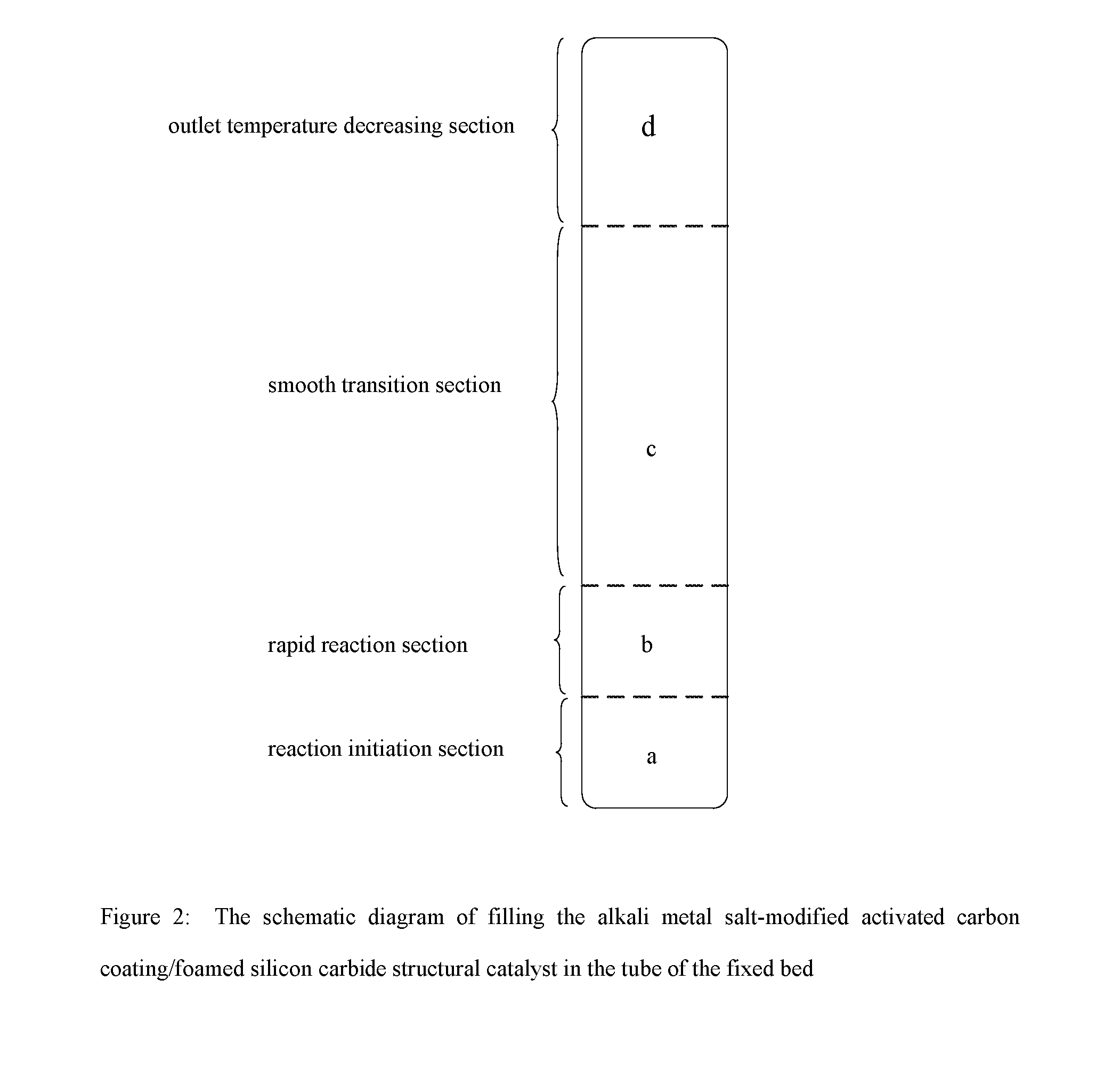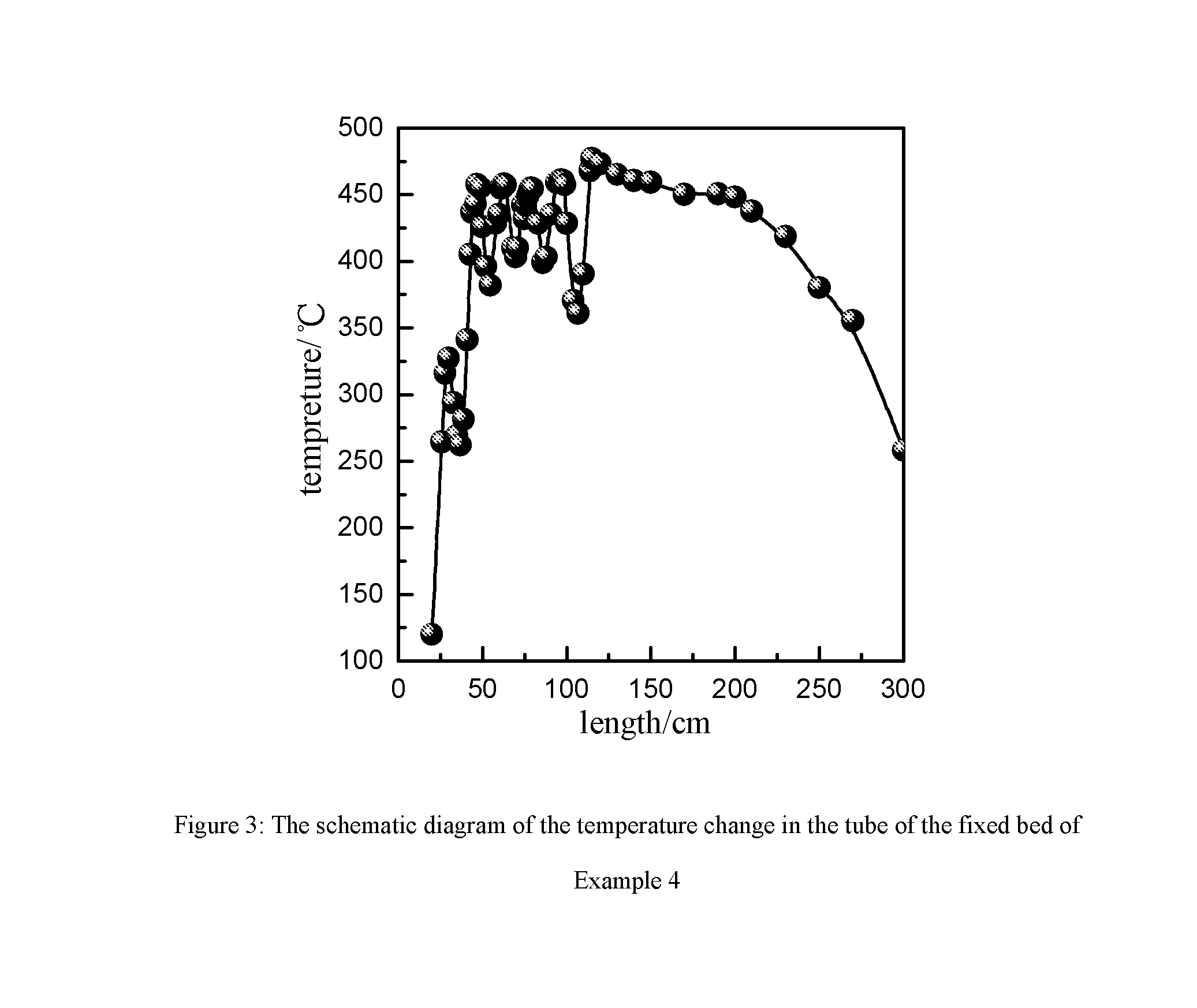Catalyst for preparing phosgene and method for preparing phosgene using the same
a catalyst and phosgene technology, applied in the field of phosgene preparation, can solve the problems of reducing the synthesis reaction speed, wasting considerable amount of reaction heat, and reducing the color quality of products, so as to reduce the loss and pulverization of activated carbon, reduce the cost of equipment and utility costs, and reduce the effect of synthesis reaction speed
- Summary
- Abstract
- Description
- Claims
- Application Information
AI Technical Summary
Benefits of technology
Problems solved by technology
Method used
Image
Examples
example 1
[0060](1) The foamed silicon carbide ceramic having the average pore size of 1 mm is immersed in 3 mol / L of NaOH solution for 10 minutes, and washed with water and then baked under air atmosphere of 120° C. for 3 hours;[0061](2) A suspension is prepared according to the proportion of phenolic resin:activated carbon:curing agent (hexamethylene tetramine):ethyl alcohol=100:50:2:100 on a weight basis, and a slurry is obtained by ball-milling said suspension for 1 hour;[0062](3) The foamed silicon carbide ceramic after washing and drying is immersed in the above-said slurry of the activated carbon for 5 minutes, and then is taken out and blown away the excess slurry from it using compressed air, and baking it under air atmosphere of 100° C.;[0063](4) Step (3) is repeated by using the baked product from the above step until the loading of the coating of the activated carbon reaches 200 g / L;[0064](5) The sample is heated to 700° C. at the speed of 2° C. / minute under nitrogen atmosphere an...
example 2
[0067](1) The activated carbon coating / foamed silicon carbide structural catalyst prepared by Example 1 is immersed in 1.5 mol / L of aqueous sodium chloride (NaCl) solution for 4 hours, and washed with water and then baked under air atmosphere of 100° C.;[0068](2) Step (1) is repeated using the baked sample until the loading of NaCl reaches 50 g / L;[0069](3) The baked sample is calcined at 400° C. for 2 hours under the protection of nitrogen atmosphere to obtain sodium chloride (NaCl)-modified activated carbon coating / foamed silicon carbide structural catalyst having sodium chloride content of 30 g / L.
[0070]As an another example, steps (1)˜(3) are repeated, but the activated carbon coating / foamed silicon carbide structural catalyst is immersed in 0.8 mol / L of NaCl aqueous solution for 2 hours to prepare the baked catalyst having the loading of sodium chloride of 0.6 g / L. The sample is calcined at 400° C. under the protection nitrogen atmosphere for 2 hours to obtain sodium chloride (Na...
example 3
[0073](1) The activated carbon coating / foamed silicon carbide structural catalyst prepared by Example 1 is immersed in 1.5 mol / L of aqueous potassium chloride (KCl) solution for 2 hours, and washed with water and then baked under air atmosphere of 100° C.;[0074](2) Step (1) is repeated using the baked sample until the loading of KCl reaches 20 g / L;[0075](3) The baked sample is calcined at 500° C. for 1 hours under the protection of nitrogen atmosphere to obtain potassium chloride (KCl)-modified activated carbon coating / foamed silicon carbide structural catalyst having potassium chloride content of 15 g / L.
[0076]As an another example, steps (1)˜(3) are repeated, but the activated carbon coating / foamed silicon carbide structural catalyst is immersed in 1.5 mol / L of aqueous KCl solution for 4 hours to prepare the baked catalyst having the loading of potassium chloride of 30 g / L. The sample is calcined at 400° C. under the protection of nitrogen atmosphere for 2 hours to obtain potassium...
PUM
| Property | Measurement | Unit |
|---|---|---|
| thickness | aaaaa | aaaaa |
| thickness | aaaaa | aaaaa |
| thickness | aaaaa | aaaaa |
Abstract
Description
Claims
Application Information
 Login to View More
Login to View More - Generate Ideas
- Intellectual Property
- Life Sciences
- Materials
- Tech Scout
- Unparalleled Data Quality
- Higher Quality Content
- 60% Fewer Hallucinations
Browse by: Latest US Patents, China's latest patents, Technical Efficacy Thesaurus, Application Domain, Technology Topic, Popular Technical Reports.
© 2025 PatSnap. All rights reserved.Legal|Privacy policy|Modern Slavery Act Transparency Statement|Sitemap|About US| Contact US: help@patsnap.com



